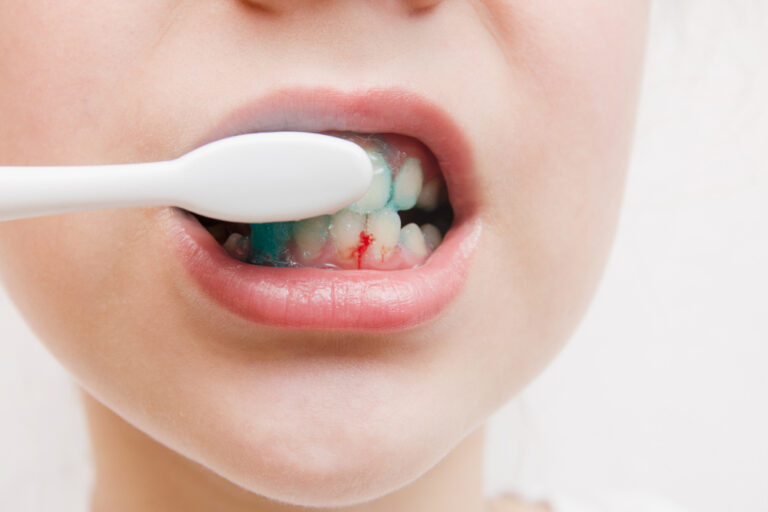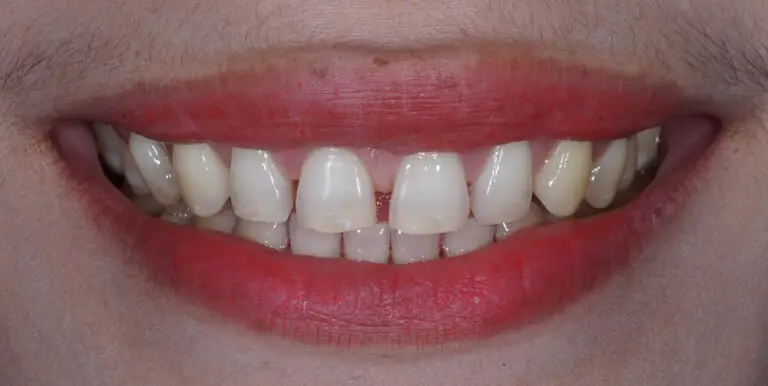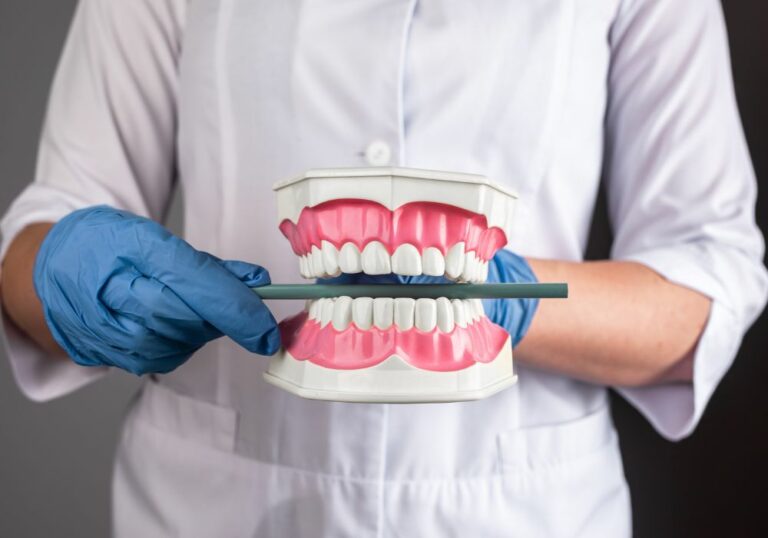When it comes to oral health, there are many factors to consider. One important aspect is how your teeth look and function when biting down. The way your teeth align and fit together can have a significant impact on your overall oral health and comfort.
Ideally, when you bite down, your teeth should fit together seamlessly, with the top teeth slightly overlapping the bottom teeth. This is known as a normal bite or occlusion. However, not everyone has a normal bite, and there are several types of misalignments that can occur. These misalignments can lead to a range of issues, from discomfort and difficulty chewing to more serious problems like tooth decay and gum disease.
The Ideal Bite
When it comes to having a healthy and attractive smile, having an ideal bite is crucial. An ideal bite means that your teeth are properly aligned and fit together in a way that allows you to chew and speak comfortably, without any pain or discomfort.
The ideal bite is characterized by the following:
- The upper teeth should fit slightly over the lower teeth and the points of the molars should fit the grooves of the opposite molars.
- Each tooth should be touching the one next to it, with no spacing in between, when viewed from an arch view.
- With teeth closed together, about one half to two thirds of the length of the bottom teeth should be visible.
If your bite is not ideal, it can lead to a variety of dental problems, including:
- Tooth decay
- Gum disease
- TMJ disorder
- Headaches
- Speech problems
Fortunately, there are several options available to correct an imperfect bite, including braces, clear aligners, and other orthodontic treatments.
If you are concerned about the appearance or function of your bite, it is important to consult with a qualified dental professional. They can evaluate your bite and recommend the best course of treatment to help you achieve a healthy and beautiful smile.
Understanding Malocclusion

Malocclusion is a dental condition where your teeth are not properly aligned when you bite down. This can lead to various oral health complications if left untreated. It can also affect your speech, ability to chew properly, and even cause jaw pain. Here, we will take a closer look at the types and causes of malocclusion.
Types of Malocclusion
There are different types of malocclusion, and they are classified based on the way your teeth are misaligned. Here are some of the most common types:
- Overbite: When your upper teeth overlap your lower teeth too much
- Underbite: When your lower teeth protrude past your upper teeth
- Crossbite: When your upper teeth bite down inside your lower teeth
- Open bite: When some of your teeth don’t touch when you bite down
- Crowded teeth: When there is not enough space in your jaw for your teeth to fit properly
Causes of Malocclusion
Various factors can lead to malocclusion, including:
- Genetics: Malocclusion can be hereditary, and you may be more likely to develop it if it runs in your family.
- Thumb sucking: Sucking your thumb or using a pacifier for too long can cause your teeth to shift out of alignment.
- Tongue thrusting: If you push your tongue against your teeth when swallowing, it can lead to malocclusion.
- Jaw injuries: Trauma to your jaw can cause malocclusion.
- Missing teeth: If you lose a tooth, it can cause your other teeth to shift and become misaligned.
It’s essential to get your malocclusion treated by a dental professional to prevent further complications. Your dentist or orthodontist can recommend the best treatment options for you, which may include braces, aligners, or other orthodontic devices.
Remember to maintain good oral hygiene habits, such as brushing and flossing regularly, to keep your teeth healthy and prevent any further dental issues.
The Role of Teeth Alignment in Biting Down
When you bite down, your teeth should be aligned in a way that allows them to work together effectively. Proper teeth alignment helps ensure that your bite is stable, comfortable, and functional. Here are a few ways that teeth alignment plays a role in biting down:
- Protecting your tongue and cheeks: When your teeth are properly aligned, your lower teeth should fit snugly behind your upper teeth when you bite down. This helps prevent accidental bites to your tongue or cheeks.
- Distributing pressure evenly: Your teeth should come together in a way that allows them to distribute the pressure of your bite evenly across all of your teeth. This helps prevent excessive wear and tear on any one tooth.
- Cutting and grinding food effectively: Your front teeth are responsible for biting into food, while your back teeth (molars) are designed for chewing and grinding. Proper teeth alignment ensures that each tooth is doing its job effectively.
- Avoiding pain and discomfort: Misaligned teeth can cause pain and discomfort when you bite down. This can lead to headaches, jaw pain, and other issues.
Overall, proper teeth alignment is an important factor in ensuring that your bite is comfortable, functional, and healthy. If you are experiencing pain or discomfort when you bite down, it may be a sign that your teeth are misaligned and you should consult with a dentist or orthodontist.
Importance of Proper Bite

Having a proper bite is crucial for maintaining good oral health. Your bite refers to the way your upper and lower teeth fit together when you close your mouth. If your bite is not aligned properly, it can cause a range of dental problems, including:
- Tooth wear
- Tooth sensitivity
- Gum recession
- Jaw pain
- Headaches
- Chipped or cracked teeth
- Speech difficulties
A proper bite allows you to chew your food effectively and comfortably, which is essential for good digestion. It also helps to distribute the force of your bite evenly across all your teeth, preventing excessive wear and tear on individual teeth.
If you have an improper bite, it can put extra pressure on certain teeth, causing them to wear down faster than others. This can lead to tooth sensitivity, which can make it difficult to eat and drink hot or cold foods and beverages. Over time, this can also lead to gum recession, which can expose the roots of your teeth and make them more vulnerable to decay.
In addition to dental problems, an improper bite can also cause jaw pain and headaches. This is because an uneven bite can put extra strain on your jaw muscles, leading to tension and discomfort. If left untreated, this can eventually lead to temporomandibular joint disorder (TMJ), which can cause chronic pain and difficulty opening and closing your mouth.
Overall, having a proper bite is essential for maintaining good oral health and preventing a range of dental problems. If you suspect that you have an improper bite, it’s important to see a dentist or orthodontist for an evaluation. They can recommend the best course of treatment to correct your bite and prevent further oral health problems.
Identifying Bite Problems
If you’re wondering how your teeth should look when biting down, it’s important to understand what a good bite looks like. A good bite means that your teeth fit together properly, and your jaw is aligned correctly. However, some people may experience bite problems that can cause discomfort or even damage to their teeth and jaw.
Symptoms of a Bad Bite
Here are some common symptoms of a bad bite:
- Teeth that are crooked or crowded
- Teeth that are too far apart or too close together
- Pain or discomfort when biting or chewing
- Grinding or clenching of the teeth
- Headaches or jaw pain
- Uneven wear on the teeth
- Clicking or popping in the jaw
If you experience any of these symptoms, it may be a sign of a bite problem. It’s important to see a dentist or orthodontist for a diagnosis.
Diagnosis of Bite Problems
To diagnose a bite problem, your dentist or orthodontist will usually perform a physical exam and take x-rays or other images of your teeth and jaw. They may also ask you questions about your symptoms and medical history.
There are several types of bite problems that your dentist or orthodontist may diagnose, including:
- Crossbite: When the upper teeth fit inside the lower teeth
- Overbite: When the upper teeth overlap the lower teeth too much
- Underbite: When the lower teeth stick out further than the upper teeth
- Open bite: When the upper and lower teeth don’t touch when biting down
- Crowding: When there isn’t enough space for all of the teeth
- Spacing: When there is too much space between the teeth
- Misaligned jaw: When the jaw is not properly aligned
Once your dentist or orthodontist has diagnosed your bite problem, they will recommend a treatment plan. Treatment options may include braces, aligners, or other orthodontic appliances, as well as surgery in some cases.
Remember, identifying and treating a bite problem early can help prevent further damage to your teeth and jaw. So if you’re experiencing any symptoms of a bad bite, don’t wait to see your dentist or orthodontist.
Treatment Options for Bite Correction
If you have malocclusion, or a misaligned bite, there are several treatment options available to help correct it. Depending on the severity of your condition, your dentist or orthodontist may recommend one or more of the following options:
Orthodontic Treatment
Orthodontic treatment is the most common and effective way to correct a misaligned bite. It involves the use of braces, aligners, or other orthodontic appliances to gradually move your teeth into the correct position. The length of treatment will depend on the severity of your condition, but most people wear braces or aligners for one to three years.
During orthodontic treatment, you will need to visit your dentist or orthodontist regularly for adjustments and checkups. You will also need to follow a strict oral hygiene routine to keep your teeth and gums healthy.
Surgery for Bite Correction
In some cases, orthodontic treatment alone may not be enough to correct a misaligned bite. If your condition is severe, your dentist or orthodontist may recommend surgery to reposition your jaw. This is known as orthognathic surgery.
During orthognathic surgery, your jaw will be repositioned to improve your bite and facial appearance. The procedure is typically performed under general anesthesia and may require a hospital stay of one to two days.
Orthognathic surgery is a major procedure and should only be considered as a last resort. Your dentist or orthodontist will only recommend it if other treatment options have been unsuccessful or if your condition is severe enough to warrant surgery.
In summary, orthodontic treatment and surgery are two effective options for correcting a misaligned bite. Your dentist or orthodontist will work with you to determine the best course of treatment based on the severity of your condition and your individual needs.
Preventive Measures for Bite Problems

If you’re experiencing frequent bite problems, there are several preventive measures you can take to reduce the likelihood of these issues. Here are some tips to help you prevent bite problems:
1. Practice Good Oral Hygiene
Good oral hygiene is essential for preventing bite problems. Brush your teeth twice a day, floss daily, and use mouthwash to keep your mouth clean and healthy. This will help prevent gum disease, which can cause bite problems.
2. Avoid Bad Habits
Bad habits, such as nail-biting, pen-chewing, and teeth-grinding, can cause bite problems. Try to avoid these habits as much as possible to prevent damage to your teeth and jaw.
3. Wear a Mouthguard
If you play sports or grind your teeth at night, wearing a mouthguard can help prevent bite problems. A mouthguard will protect your teeth and prevent damage to your jaw.
4. Get Regular Dental Checkups
Regular dental checkups can help prevent bite problems by identifying and treating dental issues early on. Your dentist can also provide advice on how to maintain good oral health and prevent bite problems.
5. Address Underlying Issues
If you’re experiencing frequent bite problems, there may be an underlying issue that needs to be addressed. Malocclusion, misaligned teeth or bite, or seizures can all cause bite problems. If you suspect an underlying issue, talk to your dentist or doctor for further evaluation and treatment.
By following these preventive measures, you can reduce the likelihood of bite problems and maintain good oral health.
Frequently Asked Questions
What is the ideal way for teeth to align when biting down?
The ideal way for teeth to align when biting down is with the upper teeth slightly overlapping the lower teeth. This is known as a normal bite occlusion. It allows for proper chewing and helps prevent jaw pain and other dental issues.
How should resting teeth look?
When your teeth are at rest, they should be slightly apart, with the upper teeth resting on the lower teeth. This helps prevent unnecessary wear and tear on your teeth and reduces the risk of jaw pain.
Why don’t my teeth line up when I bite down?
There are several reasons why your teeth may not line up when you bite down. It could be due to genetics, missing teeth, or dental problems such as a misaligned jaw or crooked teeth. If you are concerned about your bite, it is best to consult with a dentist.
What is the proper way for top and bottom teeth to touch?
The proper way for the top and bottom teeth to touch is with the upper teeth slightly overlapping the lower teeth. This helps ensure that your bite is aligned properly and reduces the risk of dental problems.
What is the ideal bite teeth alignment?
The ideal bite teeth alignment is when the upper teeth slightly overlap the lower teeth, allowing for proper chewing and reducing the risk of jaw pain and other dental problems.
Should teeth touch when smiling?
When you smile, your teeth should touch slightly, but not too much. If your teeth touch too much when you smile, it can make your smile look unnatural. However, if your teeth don’t touch at all when you smile, it can make your smile look awkward. It is best to consult with a dentist to determine the ideal amount of teeth touching when you smile.







